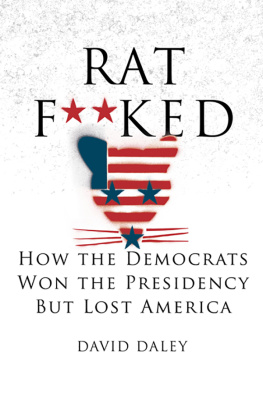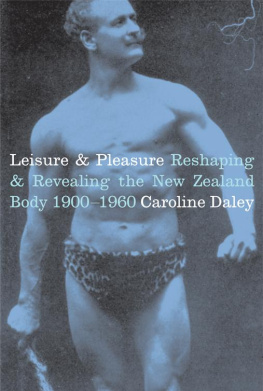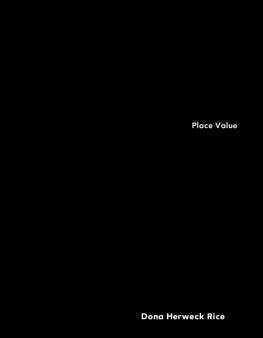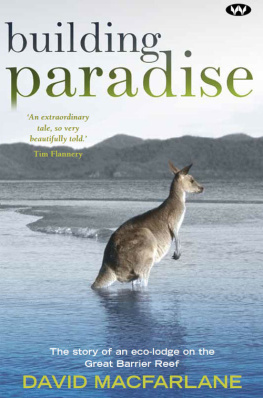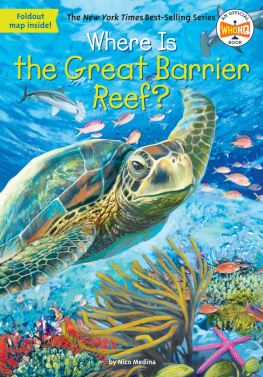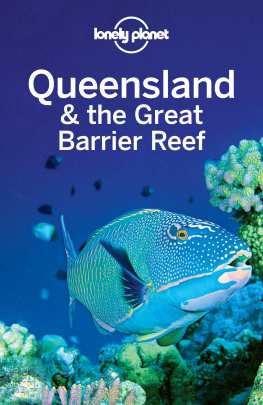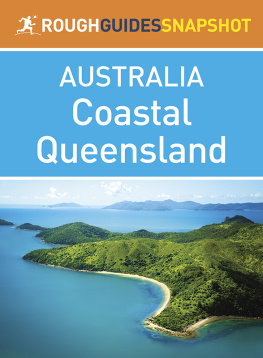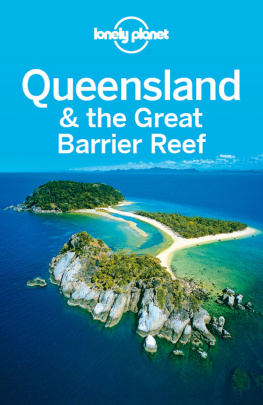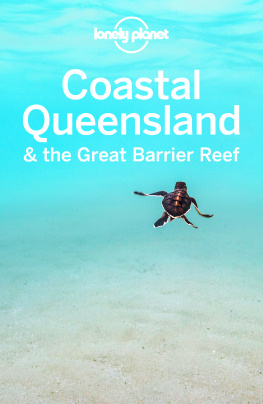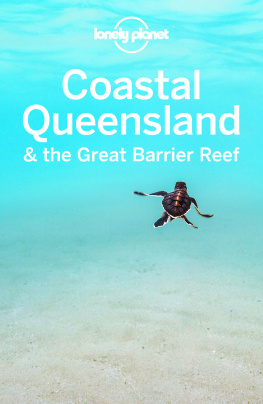The Great Barrier Reef
The Great Barrier Reef is located along the coast of Queensland in north-east Australia and is the worlds largest coral reef ecosystem. Designated a World Heritage Area, it has been subject to increasing pressures from tourism, fishing, pollution and climate change, and is now protected as a marine park. This book provides an original account of the environmental history of the Great Barrier Reef, based on extensive archival and oral history research.
It documents and explains the main human impacts on the Great Barrier Reef since European settlement in the region, focusing particularly on the century from 1860 to 1960 which has not previously been fully documented, yet which was a period of unprecedented exploitation of the ecosystem and its resources. The book describes the main changes in coral reefs, islands and marine wildlife that resulted from those impacts.
In more recent decades, human impacts on the Great Barrier Reef have spread, accelerated and intensified, with implications for current management and conservation practices. There is now better scientific understanding of the threats faced by the ecosystem. Yet these modern challenges occur against a background of historical levels of exploitation that is little-known, and that has reduced the ecosystems resilience. The author provides a compelling narrative of how one of the worlds most iconic and vulnerable ecosystems has been exploited and degraded, but also how some early conservation practices emerged.
Ben Daley is Lecturer in Environmental Management in the Centre for Development, Environment and Policy at the School of Oriental and African Studies (SOAS), University of London, UK. He was previously a researcher at the School of Earth and Environmental Sciences, James Cook University, Australia.
Earthscan Oceans
Governing Marine Protected Areas
Resilience through diversity
Peter J.S. Jones
Marine Policy
An introduction to governance and international law of the oceans
Mark Zacharias
The Great Barrier Reef
An environmental history
Ben Daley
Marine Biodiversity Conservation
A practical approach
Keith Hiscock
For further details please visit the series page on the Routledge website: http://www.routledge.com/books/series/ECOCE
The Great Barrier Reef
An environmental history
Ben Daley

First published 2014
by Routledge
2 Park Square, Milton Park, Abingdon, Oxon OX14 4RN
and by Routledge
711 Third Avenue, New York, NY 10017
Routledge is an imprint of the Taylor & Francis Group, an informa business
2014 Ben Daley
The right of Ben Daley to be identified as author of this work has been asserted by him in accordance with sections 77 and 78 of the Copyright, Designs and Patents Act 1988.
All rights reserved. No part of this book may be reprinted or reproduced or utilised in any form or by any electronic, mechanical, or other means, now known or hereafter invented, including photocopying and recording, or in any information storage or retrieval system, without permission in writing from the publishers.
Trademark notice: Product or corporate names may be trademarks or registered trademarks, and are used only for identification and explanation without intent to infringe.
British Library Cataloguing-in-Publication Data
A catalogue record for this book is available from the British Library
Library of Congress Cataloging-in-Publication Data
Daley, Ben.
The Great Barrier Reef : an environmental history / Ben Daley.
pages cm. (Earthscan oceans)
Includes bibliographical references and index.
1. Great Barrier Reef (Qld.) 2. Coral reef ecology Australia Great Barrier Reef (Qld.) 3. Coral reefs and islands Australia.I. Title.
QE566.G7D35 2014
578.7789476dc23 | 2014005387 |
ISBN: 978-0-415-82439-2 (hbk)
ISBN: 978-0-203-54592-8 (ebk)
Typeset in Goudy
by HWA Text and Data Management, London
Contents
(a) Area of sugar cane grown in Queensland, 18641988;
(b) Fertiliser application in the Great Barrier Reef Catchment Area (GBRCA), 19001980
The Great Barrier Reef, the largest coral reef ecosystem on earth, gained World Heritage listing in 1981 as the most impressive marine area in the world. At the time of inscription, the IUCN evaluation stated if only one coral reef site in the world were to be chosen for the World Heritage List, the Great Barrier Reef is the site to be chosen.
Since then, the Great Barrier Reef has been recognised as one of the best managed marine areas in the world. The 2004 Zoning Plan for the Great Barrier Reef Marine Park increased the proportion of the Marine Park that was highly protected by no-take zones from less than 5 per cent to more than 33 per cent. This rezoning protected representative examples of each of the Reefs 70 bioregions (broad habitat types) occurring across its entire area of some 340,000 km2 including the surrounding waters.
This rezoning was hailed as a new benchmark in the systematic conservation planning of marine protected areas an example of international best practice. It won numerous national and international awards.
Nonetheless, scientific information has now established that the Great Barrier Reef has been in serious decline for decades. The causes of the decline are well known: pollution from coastal development and agricultural runoff, extreme weather events and the impacts of climate change, particularly increasing temperature and ocean acidification.
The World Heritage Committee considered the state of conservation of the Great Barrier Reef World Heritage Area in 2012, and noted with concern a critical report from the World Heritage Centre/IUCN reactive monitoring mission that visited Australia earlier that year. UNESCO is scheduled to make a decision about whether to inscribe the Great Barrier Reef on the List of World Heritage in Danger at the time of writing in 2014.
Global concerns about the future of coral reefs increasingly and appropriately focus on climate change. Nonetheless, it is important to remember that the Great Barrier Reef ecosystem abuts the eastern coast of Queensland over some 14 degrees of latitude. Land modification associated with the increased human population, urban development and agricultural expansion in the Great Barrier Reef catchment area has reduced the quality of water flowing into the Great Barrier Reef lagoon. This area comprises some 25 per cent of the land area of Queensland, and is home to more than one million people in addition to the two million tourists that visit the region each year.
This book shows that the adverse impacts of coastal development and primary industries on the integrity of the Great Barrier Reef ecosystem have their genesis in the development of Queensland since European colonisation in the nineteenth century. Through a meticulous analysis of archival materials, official sources, publications, photographs and oral history evidence, this book documents for the first time how the colonisation of Queensland and the resultant growth of primary industries have contributed to the decline of the Great Barrier Reef. These primary industries have variously included: fisheries for bche-de-mer, clam, coral, dugong, finfish, pearl-shell, prawns, sharks, shell-collecting, trochus, turtle and whales; mining for coral, guano and rock-phosphate; as well as agriculture, including the sugar cane and beef industries. Although most of the Great Barrier Reef islands are now protected as national parks, many islands were impacted by mining, the creation of coconut palm plantations, vegetation clearance, overgrazing by goats and the introduction of exotic vegetation.
Next page

